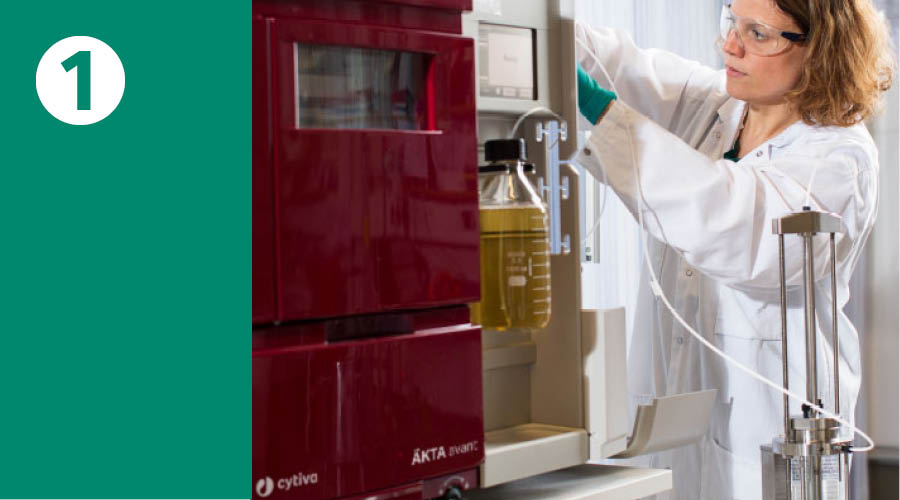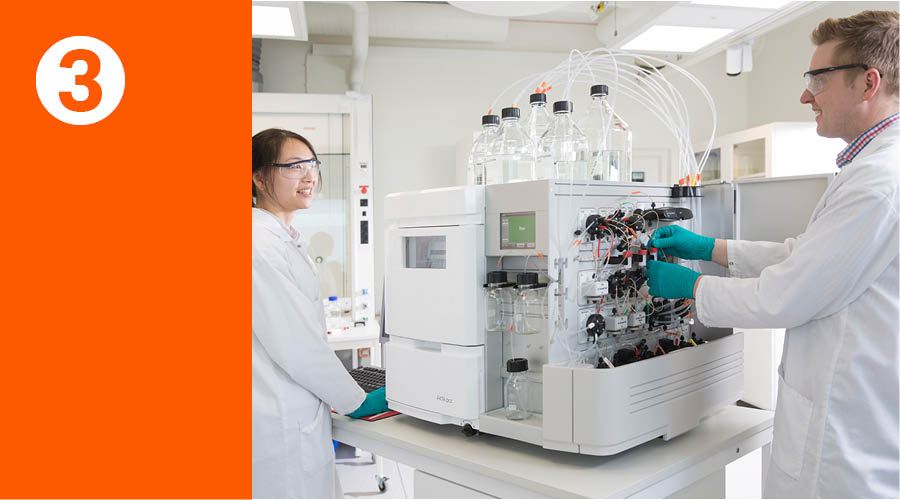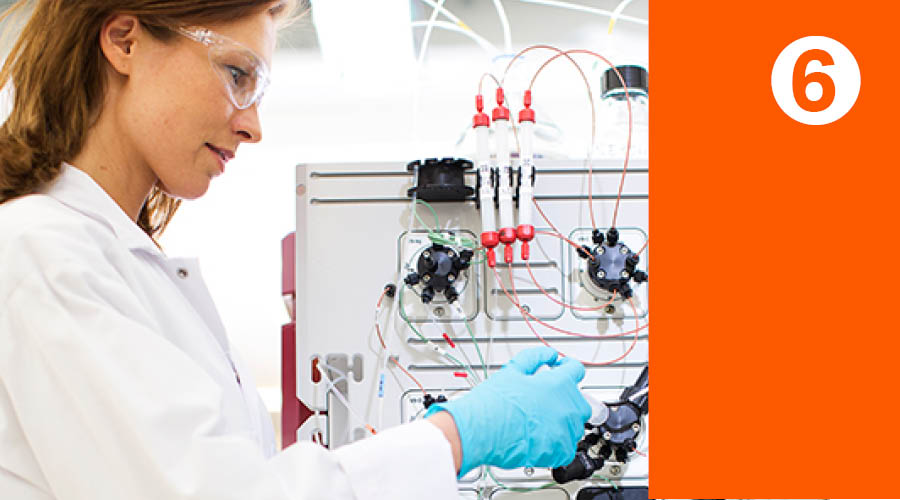To continually break down barriers and make new discoveries, you need lab equipment that performs consistently. Use this checklist of best practices to keep bioprocessing instruments running smoothly, reduce downtime, and extend the life of your lab equipment.
1. Choose a primary point person for the equipment.
Appointing one point person to oversee maintenance is more efficient than leaving the job to various users — a designated point person can efficiently track use and cleaning schedules and serve as a resource for other users. And they’ll develop a deeper knowledge of the technology, which empowers their work moving forward.
2. Collaborate with your IT specialists to develop an infrastructure.
As labs are shifting toward centralized data and automation, IT is becoming an integral partner in meeting scientific goals. New technology approaches can enable multi-faceted assessment and manipulation of data.
3. Rinse the system with highly purified water after each use.
Running molecules or proteins through flow paths can slowly create blockages and lead to contamination. Keep your instruments in optimal condition by rinsing them after every run. Create a simple log sheet that tracks each use and cleaning.
4. Develop a routine deep-cleaning protocol.
It’s essential to conduct deep cleans on a regular basis to prevent detrimental surface interactions that can weaken the effectiveness and longevity of bioprocessing equipment. Follow manufacturer recommendations for a deep-cleaning schedule and use calendar reminders to stay on track.
5. Regularly test the methods run on the equipment.
Issues can often be traced back to the parameters or design of a method. Confirming a method is easier (and less expensive) than reporting a false equipment failure. By consistently checking each breakpoint while running a test, you can isolate a potential problem before it affects productivity.
6. Schedule regular preventive maintenance.
Depending on level of use, lab equipment should have preventive maintenance every 1 to 2 years. Timely maintenance by a qualified service engineer supports reliable results, reduces downtime, and extends equipment life.
Reliable lab equipment and consistent results are crucial for moving your work forward. Implement these practices and schedule regular preventive maintenance to help keep your research running smoothly.
We’re here to help! Contact the Cytiva service team to learn more about ways we can help you optimize your equipment’s performance.





